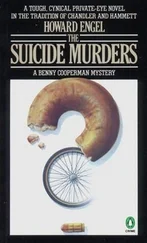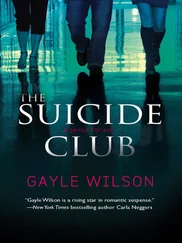“We’ll continue this miscommunication in court,” the man says.
They grab their carry-ons and are escorted off. After the three leave, the stewardess helps the girl with the blue nails to get her things. “Is this yours?” she asks, reaching above for a bag with Girl Scout badges and a tube with birthday wrap.
“Not the birthday one,” she says. She looks around tearfully and her eyes finally land on you, sitting with your mouth open, staring. “I’m sorry,” she says to you, and walks down the aisle after the woman. Don’t go, you want to say. You would give her the birthday painting if it would stop her tears.
Over the intercom comes an announcement. “We’re sorry for the delay folks, just a routine safety check and we’ll be on our way. Nothing at all to worry about.” Over the speakers, another announcement, “The man in seat 23C is highly dangerous. We will perform a routine safety check on him, too. Do not attempt to probe him. We must get him off the plane. Off—” You open your mouth very wide.
The engines whir and the whispering bares its teeth. You can hear them all, every word. You can hear Jill talking about following himself on the FBI site, and Mr. Fox about his vacation, and the Indian family and the white girl arguing in an office inside the airport; they stop and stare together out the window when they see the plane leaving them behind. You can hear your mother crying in the car, and your sister crying over the baby in her belly, your father berating himself as he divides daylilies, showering soil around his feet. Some of it catches inside the cuff of his sock. You can hear strangers screech their tires and roll their eyes and yell at their children. Thousands of voices, a tower of them stacked and teetering, calling for help and blaming. It is too much to take in all at once, all those demands like prayers and none directed to a god. It’s surprising so many people get up in the morning.
You are not God. But you lift off the ground. Clear twilight sky for miles, but fat clouds are approaching like bums. The engines and the wind throb in your ears. The air pushing past you is so loud your head is underwater, the drum and rush and echo of being submerged. Your forehead feels clammy, you touch it. You could push your forehead in, clay. You could push in and the skin would give and break and you could push past all the mush and touch your brain, if you want. You leave your fingers on your skull. The buzzing keeps on. No one seems to notice that the wind is rotting away the plane’s steel exterior, and now the sides are gone, stripped off, and you are left sitting in the open night air with your seatbelt still fastened and digging into your stomach, flying over the Rockies.
Alone in the open, the multitude of voices die off until there is only one: an old woman. Her words are nebulous but they are undeniably words. Spider-thread voice. She says: it’s time.
But up ahead is a storm. There is a seam opening in the universe too big to mend itself. It is open because of your failures. This is where things enter and escape, and when they escape they are gone forever, they never existed.
The plane rematerializes around you, and the old woman’s voice is drowned out by the others’. Everyone else is asleep and everyone has the painted, open eyes of chipped, porcelain mannequins. You do not let them know you can hear their thoughts. You put in your earphones and pretend nothing out of the ordinary is happening. Quietly, so no one notices, you wonder: what would it be like to jump?
The clouds are teeth out there in the dark. The man next to you says in his sleep, Jump off the plane. It would be so easy, door’s open. Jump off the plane. You see the man’s mouth moving. Jump before they all die. Jump through the open seam of the universe and erase yourself. Maybe then it will mend. The cabin lights dim and the crystal floor lights guide the way to the exit. And there is a new sound, thunderous. The storm is worsening. You lift your feet to your seat and hug your legs, bury your head behind your knees, glancing over them at the thunder pulsing down the aisle. Jump off the plane, stupid. Jump off the plane or Jules will get hurt. Jump off the plane to reach Nicolette. Jump jump jump jump jump off the plane.
And who are you to argue with logic? This is the jump you’ve been preparing for all your life.
And it isn’t thunder at all. It’s the bees. Out of the crystal aisle lights rise hundreds, thousands of lost bees.
The seconds slow to minutes, to days. There are whole years between moments.
The bees swarm.
Sunrise. The plane hovers over Manhattan. The stewardess hovers over you and says, “Here is your water, sir. Thank you for your patience, you may jump now.”
You try to rise but you’re buckled in. You throw your hands over your belt, finally get it loose. You stand quickly and your shoulder knocks the cup of water onto her skirt. She screams as you shove your way toward the exit.
THE SORRY MANIFESTO 1
BY NICOLETTE BERHARDT
ANNOTATED BY WEST BUTLER
“It is not the fear of madness which will oblige us to leave the flag of imagination furled.”
— Breton’s Manifesto of Surrealism
“When you’re an artist, you’re searching for freedom. You never find it ‘cause there ain’t any freedom.”
— Alice Neel 2
1. Movements in art today are so numerous they negate each other so that in the end there are no Movements. But there is movement , change, impermanence. In this system of movements as illustrated in this manifesto, we consider ourselves a bridge, of sorts, between desired aesthetic and actual aesthetic, between what we wish our art to fulfill in us, and what it does fulfill. We attempt to reattach what is desired to what is actual. What if we saw them side by side? What would it do to the balance?
2. Once, we slept with a subject’s husband, but only because we could not have her.
3. It is easy to think of the image as timeless. Stilled. No beginning, middle, or end, no linearity, except that which we impose through language. But this is not entirely true. There is no separation between images and words. One cannot look at a painting of a dog on a deck of cards, and not think the word “dog,” or “that is an image of a dog on a deck of cards.”
4. Our father died in the war and his body walks into our dreams every night.
5. Someone once said that in a painting, “you are seeing time happen, not time frozen. Painting contains duration .” It contains time. It contains energy. An image is always changing, as the ocean is always changing, as the mountains. It is unknowable because we try to know it as fixed.
6. We wear strange clothes so people notice us. We leave spots of paint on our pants on purpose, so people will know who we are.
7. A portrait of Stephen Hawking represents Stephen Hawking. But Stephen Hawking himself does not represent a portrait of Stephen Hawking.
8. We are not double-jointed. Can’t whistle. We have never learned a card trick.
9. We just want someone to touch our neck.
10. Breton says, “Our brains are dulled by the incurable mania of wanting to make the unknown known, classifiable. The desire for analysis wins out over the sentiments.” The triumph of analysis over sentiment is, to us, a triumph. But what if nothing is knowable or classifiable, not even the self?
11. We should get peculiar when alone in our studio.
12. We orgasm very easily.
13. We don’t like sex.
14. We must get close to our subject’s devils. When we paint something, it must become real on its own account; it must stand alone as more real than the subject ever was. This energizes us enough to move beyond the image (and in turn provides the viewer with energy); we can free-float, transcend the subject in the world, so it is as if we are creating another dimension, another timeline, in which all of this is happening inside the painting. 3Another us exists in there — perhaps the us we desire to be.
Читать дальше












